Your Cart is Empty
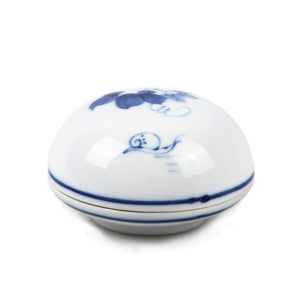
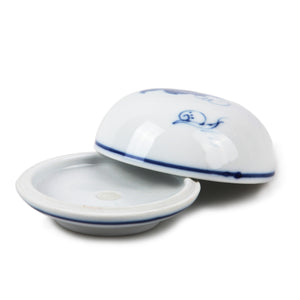
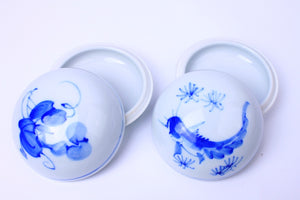
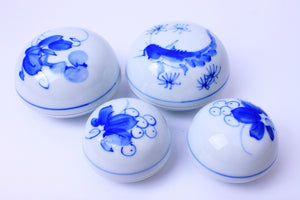
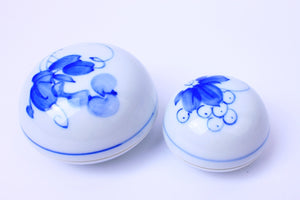
AWP002-S
Ceramic Seal Paste Container with Lid hand painted with lovely blue traditional Chinese flower pattern. Comes handy to store Chinese and Japanese seal paste in a beautiful way and protect it from drying out.
This Porcelain Seal Paste Bowl is specially made to hold the paste used to dip the seals before applying them to paper. The special lid will protect the paste from being polluted by ashes and dry air. Additionally, the container is ornately designed with blue ink to look great on your desk.
Seals have been used as a "signature" on calligraphy documents, as well as paintings, since ancient times to identify the owner of the document. Sometimes the seal identifies an individual, and other times it identifies an office. These can be very important in identifying the source of documents, and has been used to identify historical documents and paintings for many years.
Dimensions:
Large: Dia 3.3 in x H 2.4 in / Dia 9.3 cm x H 6.0 cm
Small: Dia 2.8 in x H 1.6 in / Dia 6.8 cm x H 4.0 cm
Usage: to store seal paste to prevent it from drying out
Decorative Elements: hand painted with blue Chinese decorative patterns
Needless to say, seal carving, or the making of these seals, is a very important art form. The craft is often put into the same group of elite Chinese art forms including calligraphy, painting and poetry because of its combination of calligraphy and engraving. Seal carving has quite an extensive history in China.
Initially emerging in ancient times during the Qin Dynasty (221-210 B.C.), seals at first were used only by royalty. Essentially, when the emperor put his seal onto a document, it meant that he approved the particular document. At the time, the royal seal was called Xi, which literally translates to "the imperial seal."
Later, the practice evolved and non-officials began using their own stamps, which were called Yin. During the Tang Dynasty (618-907 A.D.), this name was changed to Bao because Yin's pronunciation was similar to that of another Chinese word meaning death.
Originally, seals usually were carved into ivory, bones and tortoise shells, though the materials often have changed throughout the years. Today, they typically are carved in metal or semi-precious stones.
After the seals stopped being used exclusively by royalty, Chinese artists began using them to "sign" their artwork. To this day, artists take pride in developing an identifying seal that is unique to them and their artwork.